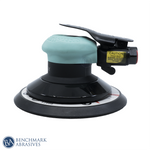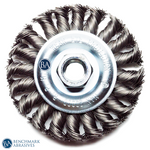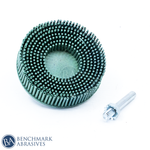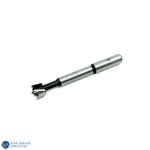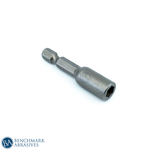Belt Sander Vs Orbital Sander

Out of the different types of sanders, belt sanders and orbital sanders are the most widely used sanding family tools. They are excellent for use on wood floors and furniture, you should use them sparingly. Choosing one of these tools can be challenging because they have similar properties. One should use the right tool based on their purpose of working.
If you have a big task, you need a belt sander, and for small or spherical jobs prefer an orbital sander. Please continue reading to find out more about belt sander and orbital sander. The distinctions between various types of sanders and how to operate them are covered in this article.
Belt Sanders
The belt sander is an effective sanding tool. It features an electric motor that moves a set of drums. A belt sander is a bit wider than other alternatives but very strong.
- IN TERMS OF SPEED – A belt sander's speed is expressed in feet per minute, or the number of feet it can sand in a minute. The faster it moves and smoothes the surface, the higher the speed rating. Most belt sanders have a variable speed feature that makes speed control simple.
- IN TERMS OF POWER – Belt sanders have a phenomenal amount of power measured in amps. Power ratings for belt sanders typically range from 8 to 11 amps. Buy a belt sander with more amperage if you want to do a lot of work.
- IN TERMS OF VARIETIES – Since every belt sander is made to be strong, there aren't many different models. Speed and power are the major factors that differentiate various belt sanders. However, you can choose between a handheld or stationary belt sander.
- IN TERMS OF IDEAL USE – Large and rough surfaces are perfect for belt sanders. Belt sanders, for instance, are excellent for large furniture pieces like tables and hardwood flooring. In contrast, belt sanders are not the right choice for small components because of their high power.
Read More: Belt Grinder vs Belt Sanders
Orbital Sanders
An orbital sander rotates in tiny circles or orbits while using sanding discs. Large sections may be quickly sanded down thanks to these swirl patterns. The sander's square design allows you to access corners and other tight spaces. These sanders can produce swirly patterns on whatever you are sanding.
- IN TERMS OF SPEED The speed of an orbital sander is measured by how many orbits it can complete in a minute. A typical orbital sander does 10,000 rotations per minute. You can do the task more quickly. Therefore, working in broad areas, you should always look for high speeds.
- IN TERMS OF POWER – Amps are used to measure orbital sander power. You are undoubtedly aware that the sander is more powerful the more amps are listed. Powerful enough to remove a large amount of surface area at once are orbital sanders. Consider using a different tool, such as a belt sander, if you need to remove a lot of surface area.
- IN TERMS OF VARIETIES – Varieties of orbital sanders are determined mainly by handle types. There are three primary categories of handles:
- Pistol-grip handles: Provide the highest level of control because you use both hands, typically found on professional sanders.
- Jug-Grip handles: Designed for adjusting the sander underneath furniture.
- Palm grip handles: Most famous due to how convenient, cozy, and tiny they are
Both corded and cordless types of orbital sander are available. The length of the cord puts a cap on the power of corded devices. In contrast, although cordless sanders are portable, they lack the same ability.
- IN TERMS OF IDEAL USE – The most suitable orbital sanders can fit into tight spaces and work on rounded edges. They are also ideal for sanding surfaces that will be treated later. If you don't treat the wood after sanding, you shouldn't use an orbital sander since it can leave swirl marks.
Belt Sanders Vs. Orbital Sanders
Belt and orbital sanders differ primarily in three ways:
1. Power
Oscillating sanders lack the power that belt sanders do. With a belt sander, it is simple to accidentally remove too much material due to its strength. In contrast, orbital sanders have just the right amount of power if you are concerned about removing too much material.
2. Sanding Method
These sanders have a unique sanding mechanism. Belt sanders push sandpaper in a loop to quickly sand down the material. In contrast to other sanders, orbital sanders move the sandpaper in a circle while it is laid flat on the surface. Peel and stick or Velcro systems are frequently used to fasten the sandpaper to the orbital sander.
3. Sandpaper Grit
The sandpaper used for sanders is also different. The simplest sanders are orbital ones because you can use almost any sandpaper on them as long as you can connect them to the machine. Belt sanders are moved in a loop, requiring a particular sandpaper. Sandpaper for belt sanders is more expensive as a result.
Belt Sanders Vs. Orbital Sanders: Which Is Best?
The needs and projects you have will determine the right sander for you. Belt sanders are ideally suited to large, flat-surface projects that demand a lot of sand power. For small, flat surface operations or around surfaces, orbital sanders perform better. The orbital sander is better if you are concerned that your hand is too sensitive for a belt sander.
Read More: Orbital Sander Vs Palm Sander
CONCLUSION
In the end, having a belt and an orbital sander is helpful. This equipment is necessary, mainly if you perform a lot of woodworking jobs and home remodeling works. However, if you have a large job, get a belt sander, and buy an orbital sander if you have little chores. Better yet, get both so you can handle a variety of tasks!











